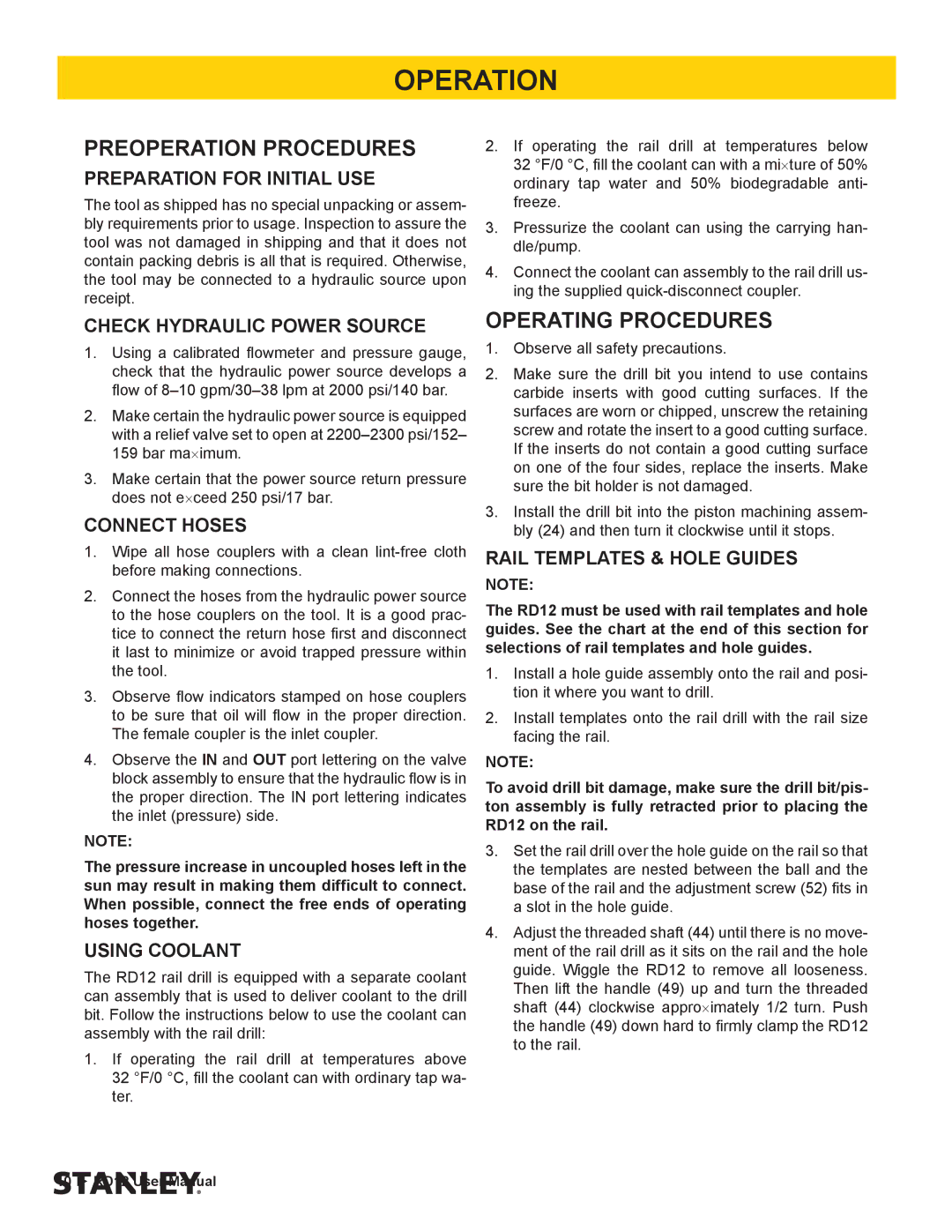RD12 specifications
Stanley Black & Decker has long been recognized for its commitment to quality and innovation in the tool and hardware industries. One notable product that embodies this dedication is the Stanley Black & Decker RD12, a reciprocating saw that stands out for its performance, versatility, and user-friendly design.The RD12 features a powerful motor that delivers high-speed cutting action, making it ideal for a variety of applications, from demolition to woodworking. With its cutting stroke length and speed, users can tackle tougher materials with ease, ensuring efficient performance on the job. The saw is designed to handle both wood and metal, showcasing its adaptability across different projects and materials.
One of the standout features of the RD12 is its lightweight and ergonomic design. Weighing in at just a few pounds, it minimizes user fatigue during extended use, allowing professionals and DIY enthusiasts alike to work comfortably. The soft-grip handle enhances control and precision, reducing the risk of slips or mishaps.
Technologically, the RD12 is equipped with a tool-less blade change system, which significantly increases convenience. Users can quickly swap out blades without the need for additional tools, saving valuable time and maintaining workflow. This feature is particularly useful in fast-paced work environments where efficiency is essential.
The RD12's built-in variable speed trigger allows users to control the cutting speed, giving them the flexibility to adjust their approach depending on the material and application. This level of control contributes to more precise cuts and enhances overall performance.
Durability is another hallmark of the RD12. Constructed from robust materials, this saw is built to endure demanding job site conditions. The inclusion of protective features, such as a heavy-duty housing and advanced cooling mechanisms, helps prevent overheating, keeping the motor in optimal working condition.
For safety, the RD12 incorporates a lock-off switch, which prevents accidental starts and provides peace of mind during operation. This is an essential feature for both professional tradespeople and home users, ensuring safe handling at all times.
In conclusion, the Stanley Black & Decker RD12 is an impressive reciprocating saw that combines power, versatility, and user-friendly features. With its innovative technologies, such as the tool-less blade change and variable speed settings, along with its ergonomic design, the RD12 represents a reliable choice for anyone looking to invest in a high-quality cutting tool. Whether you're a seasoned professional or an enthusiastic DIYer, the RD12 stands ready to tackle a multitude of cutting tasks with precision and ease.

